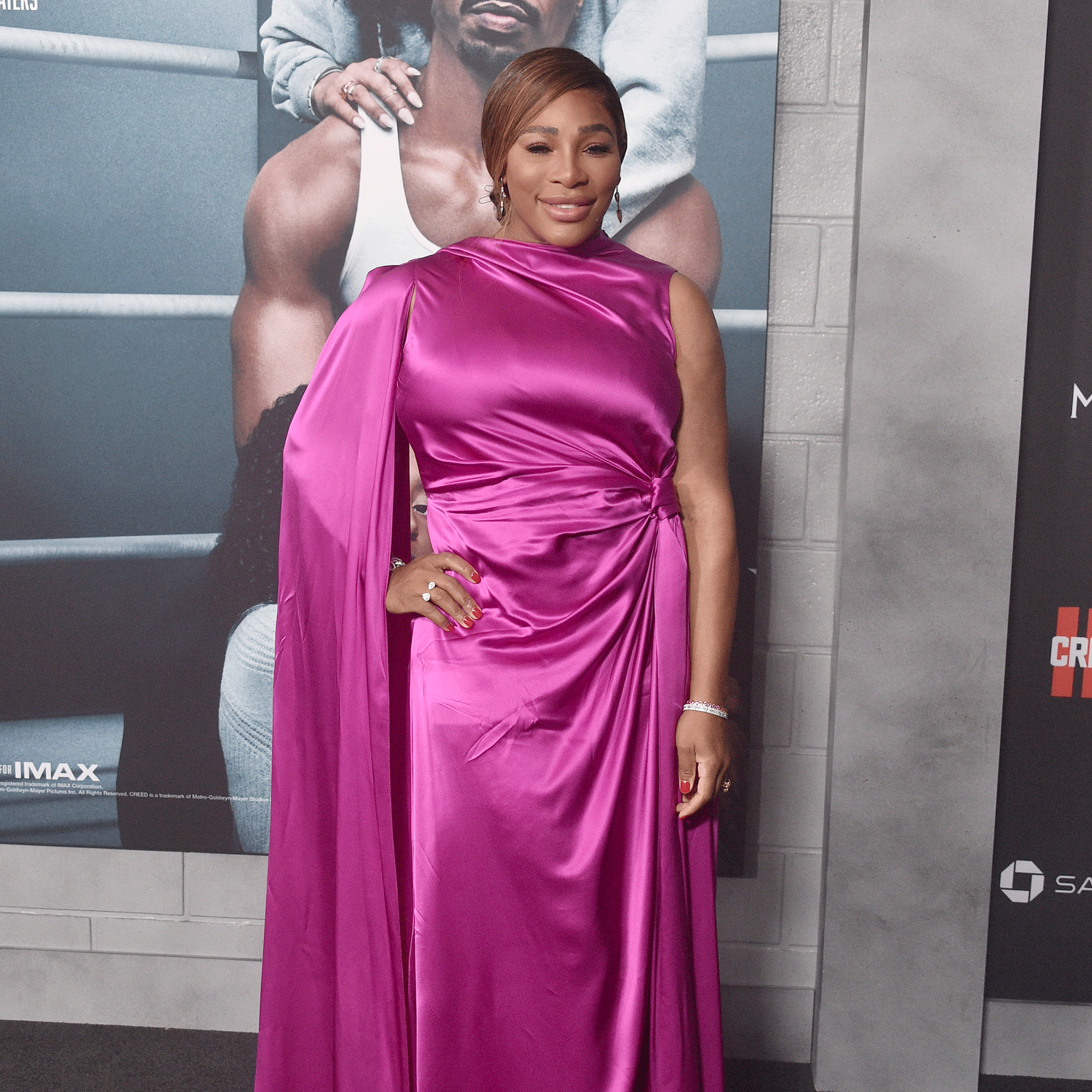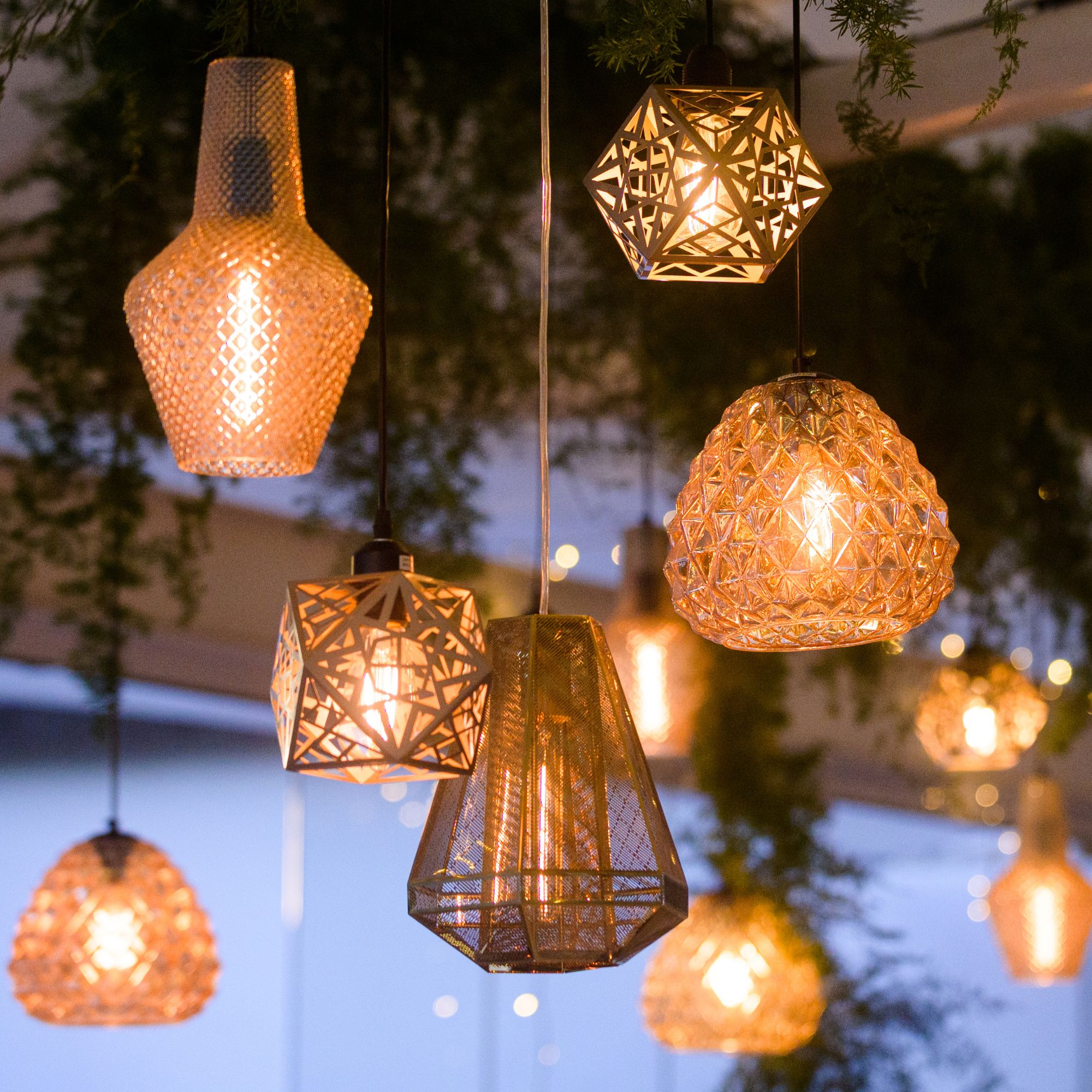
It’s official: Serena Williams isn’t just the GOAT when it comes to tennis – she’s a pro when it comes to her dining room ideas, too.
The athlete – who was famously ranked world No. 1 in singles by the Women’s Tennis Association for a whopping 319 weeks – has shared a sneak peek inside the Miami home she shares with her husband Alexis Ohanian and their daughter, Alexis Olympia Ohanian Jr. And, as you'd expect from a property designed by Serena's sister, Venus, and her luxury design firm, V Starr, it’s full to the brim with inspiring ideas.
While we could spend ages talking about her geometric kitchen island or that chic monochrome colour scheme, however, we want to turn your attention to the dining room. Specifically, the incredible and oh-so-dramatic lighting installation that Serena has hooked up above her 10-seater table.
Check it out (it's the third photo in the Instagram album below):
A ceiling filled to bursting with eclectic pendant lamps, in all different sizes and shades? Be still our beating hearts, quite frankly.
How can we recreate the Serena Williams look in our own homes?
Now, you'd be forgiven for assuming that a ceiling filled to bursting with spotlights is out-of-bounds to lesser mortals than Serena Williams, particularly as we tend to live in smaller properties than her Georgian-style mansion.
As it turns out this dining room lighting idea is easier to recreate than you'd think.
Explaining how we can recreate a similar look in our homes, Richard Davonport, Managing Director at Davonport says: 'In choosing different style pendant lights and using them together, you remove the symmetry which instantly draws the eyes to them and creates a statement. If you are unsure how to make the look work, consider using the same pendant in either a different size or colour and then build from there.
'Stick to using odd numbers of each type of light, and this will give it a more organic look that feels natural. For depth, you can choose different cord lengths to stagger your pendants to create different heights and to ensure that each pendant shines in its own light.'

Martin Waller, founder of global design brand, Andrew Martin adds: 'Lighting is one of the most important elements of interior design as it can completely transform the look and feel of a room.
'Like Serena, you can layer lighting and use multiple light sources to make a room flexible and versatile. Opt for dramatic pendants as your main source of light and pair with statement table lamps to create an atmospheric mood. Wall lights work well as accent lighting to highlight interesting features in the room, such as art or artefacts. And choose bold pieces featuring structural shapes, interesting texture or eye-catching metallics to make a style statement, even if the lighting is switched off.'
And Niki Wright, co-founder of lights&lamps, an ever-evolving curation of design-led lighting for every room in the home, offers the following three tips for amateur lighting enthusiasts:
1. Play with height
'Create a layered, ambient lighting effect using low-hanging pendants above your dining table. This will cast a beautifully soft, warm hue over the space.'
2. Experiment with textures
'Brass remains a very popular finish, but we are seeing warmer tones and more patina finishes for 2023. Polished brasses are moving towards a softer brushed brass, with our antiqued and aged finishes proving ever more popular this year.'
3. Consider your finish
'When using metallics in lighting, getting the balance is key. If used correctly polished brasses can really enhance and lift the overall aesthetic of a room. We often design lighting that combines aged brass accents with neutral, grounding textures like rattan and linen.'
Anyone who has ever read anything about hygge will know that ambient lighting design is the quickest, easiest way to create a warm and cosy atmosphere – or, if you prefer, instant 'switch off' vibes when you switch your lights on.
'I wanted to separate home from work,' Serena famously told Architectural Digest about her house. 'I love being home. When you have our job, you never get time to relax. So it’s good for me to be able to sit still and not do anything.'
Perhaps, then, we could all stand to learn something from the tennis pro's hyggelig approach to interior design and stop thinking about our lighting as purely functional. Instead, let's try to make it the centre court – oops, we mean centrepiece – of our homes.







